Dr Leevur gave me a brochure regarding bone artificial implants. It was very interesting, so I thought I could share it with my loyal readers.
Enjoy =D
Fast Facts about Bone Artificial Implants:
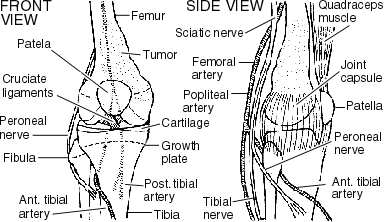
When need to use artificial implants?
- A tumor of the distal femur would destroy the adjacent bone near to the knee, this would results in the tumor spreading to the muscles, blood vessels and nerve.
- Amputation is necessary so as to minimize the chances of surgical complications. It also ensure that the local tumor is removed.
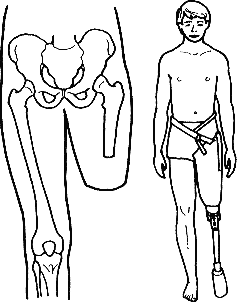
Why need to use artificial implants??
- Patients may be difficult to adapt to the sudden lost in limbs.
- They also can’t accept the change in appearance.
Different types of artificial implants available
- Bone and Joint Transplant (Osteoarticular Allograft.
- Lower end of the femur can be replaced with a bone implants with a joint surface (osteoarticular allograft).
- Bones are joined by metal plates and screws, the muscles and joint ligaments are reattached to the transplant to form a working joint.
- Advantages: normal movement is restored.
- Disadvantages: complexity of the surgical procedure ( possible injry to major blood vessel or nerve)
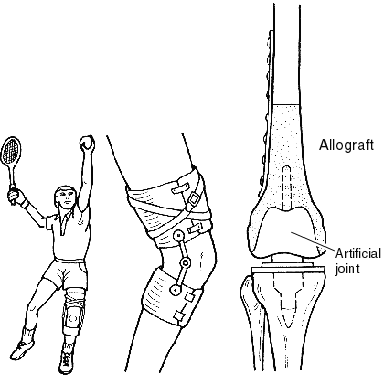
Metallic Prosthesis
- An artificial metallic implant that can be used to replace the entire end of femur and knee joints.
- Rod portion of the implant fits into the hollow marrow cavity in the femur, and secured with bone cement.
- Advantages: faster recovery than allograft.
- Disadvantages: possible cases of loosening, breakage and erosion.
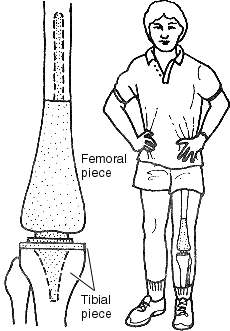
Arthrodesis
- It is a permanent joint fusion.
- A section of bone graft (obtained from another site in the body or from a bone bank) is used to bridge the gap between the femur and tibia (knitting the bones at both ends) and is held in place by metal plates, screws or rods.
- Advantages: walking and running and non-contacts sports are possible after healing.
- Disadvantages: stiff knee
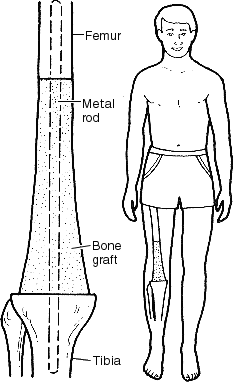
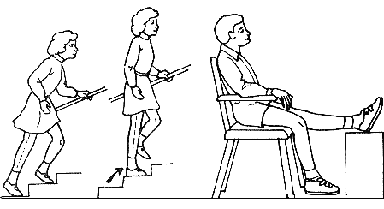
Then I asked Dr Leevur about corneal transplant, since it's very popular these days. I think he is too tired to explain to be any further, he gave me a brochure.
Good thing this way, I have hard copy of the information! yayyy!
CORNEAL TRANSPLANTATION- It is also known as keratoplasty.
- The cornea come from a dead person.
- Cornea is composed entirely of a special type of collagen.
- Cornea normally contain no blood vessel.
Purpose??
- Use when vision is lost in an eye due to damage of cornea.
- Surgery would only be carried out if only corrective lenses are useless with the case.
Process
- A disc of tissue is removed from the centre of the eye.
- It is then substituted by a corresponding tissue from the donor’s eye.
- The incision is made by a instrument called a trephine.
- The disc removed and replaced is the entire thickness of the cornea.
- Very low risks of rejections.
- This is because cornea contains no blood vessels, thus it would have low rate of rejections.
- This is because allograft rejection occurs due to reaction between the patient’s immune system and the donor tissue, which is triggered by histocompatibility antigens.
- Histocompatibility antigens is often associated with vascular tissue ( blood tissue) within the graft tissue.
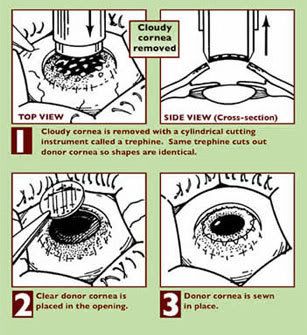 http://www.coleb.org/images/corneal_transplants2.jpg
http://www.coleb.org/images/corneal_transplants2.jpgHealth A to Z (2004). Corneal Transplantation. Singapore. Retrieved 8 Feb, 2009 from the World Wide Web: http://www.healthatoz.com/healthatoz/Atoz/common/standard/transform.jsp?requestURI=/healthatoz/Atoz/ency/corneal_transplantation.jsp
(:
XOXO

 ming fang
ming fang
 de yuan
de yuan
 ferlicia
ferlicia
 melissa
melissa
 pamela
pamela
 hui teng
hui teng
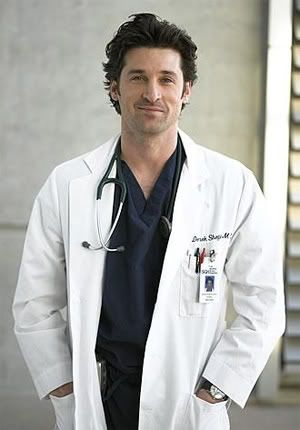 DR. Hawt Leevur
DR. Hawt Leevur